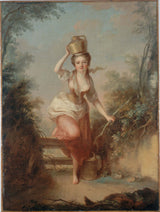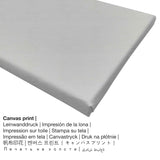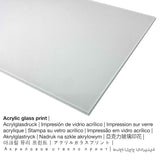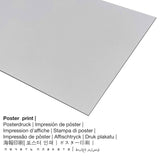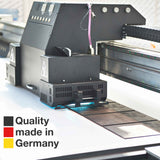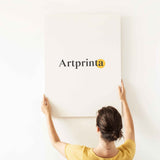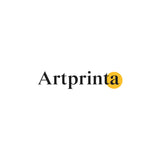Jean-Baptiste (dit l'Ancien) Huet - Nwa nwanyị mmiri ara ehi - ọmarịcha nka
Ụtụ gụnyere. Mbupu gbakọrọ na ndenye ọpụpụ.
Họrọ ụdị ihe onwunwe gị
Na nhọrọ mwepu ngwaahịa ị nwere ike họrọ ngwa na nha dabere na mmasị gị. Anyị na-ahapụ gị ka ịhọrọ n'ime ụdị ndị a:
- Kwaaji: The UV printed canvas stretched on a wooden frame. A canvas has the extra effect of three-dimensionality. A canvas print of your favorite work of art will provide you with the unique chance to transform your individual fine art print into a large size artwork as you know from galleries. Canvas prints are relatively low in weight, which means that it is easy and straightforward to hang up the Canvas print without the support of extra wall-mounts. A canvas print is suited for all types of walls.
- Akwụkwọ mmado ebipụtara (ihe kwaaji): The Artprinta poster print is a printed flat canvas paper with a slightly rough texture on the surface. It is particularly designed for placing your fine art print in a custom frame. Please keep in mind, that depending on the absolute size of the poster print we add a white margin 2-6cm round about the print motif, which facilitates the framing.
- Bipụta na iko acrylic (nke nwere ezigbo mkpuchi iko): An print on acrylic glass, often denoted as a UV print on plexiglass, will change your original into amazing wall decoration and is a good alternative to canvas or aluminium dibond fine art prints.
- Aluminom dibond (ọkpụkpụ ọla): Aluminium Dibond prints are prints on metal with a true depth effect, which creates a contemporary look thanks to a surface , which is not reflective. The Aluminium Dibond Print is the perfect introduction to replicas on aluminum. The white & bright components of the original artwork shimmer with a silky gloss, however without any glow. This direct UV print on aluminium is one of the most demanded entry-level products and is an extremely stylish way to display fine art reproductions, as it draws attention on the image.
Nkwupụta iwu: We try our utmost in order to describe our products as precisely as possible and to demonstrate them visually in our shop. Please keep in mind that the tone of the printing material and the imprint may vary marginally from the representation on your device's monitor. Depending on the screen settings and the quality of the surface, color pigments may not be printed as exactly as the digital version on this website. Since all art reproductions are processed and printed by hand, there might as well be slight differences in the motif's size and exact position.
Ozi mgbakwunye nke Musée Cognacq-Jay Paris (© - Musée Cognacq-Jay Paris - www.museecognacqjay.paris.fr)
Figure milk is often represented in the eighteenth century as it found in a sheep directory, elegant attitudes conventional water carriers. It also evokes, with her pitcher of earthenware or his cane copper, a whole folklore peasant idealized, very to the already fashionable in 1770, which will be a hit in 1786 with the pastoral fantasies of Queen Mare Antoinette and dairy of little peasant girl Trianon.La represented by Huet, simplistic and playful, reminds Perrette in the fable of Jean de La Fontaine's "milk and milk jug (Book VII, X fable).
Ngwaahịa nka
Ihe osise a The milk girl onye omenkà mere ya Jean-Baptiste (dit l'Ancien) Huet. Ihe okike izizi tụrụ akụkụ ndị a: Ogologo: 67,5 cm, obosara: 50,5 cm. Taa, mpempe nka bụ nke nchịkọta dijitalụ nke Ụlọ ihe nkiri Cognacq-Jay Paris. Nke a na-arụ ọrụ nka, nke bụ nke ngalaba ọha is being provided with courtesy of Musée Cognacq-Jay - le goût du XVIIIe Paris.Besides, the work of art has the following creditline: . Besides, the alignment of the digital reproduction is in Eserese format n'akụkụ akụkụ nke 3: 4, nke pụtara na ogologo bụ 25% mkpụmkpụ karịa obosara.
Tebụl nka nka
| Aha ọrụ nka: | "The milk girl" |
| Nhazi nka: | sere |
| Nha izizi (ọrụ nka): | Ogologo: 67,5 cm, obosara: 50,5 cm |
| Ụlọ ihe ngosi nka / ebe: | Ụlọ ihe nkiri Cognacq-Jay Paris |
| Ebe ngosi nka: | Paris, France |
| website: | Ụlọ ihe nkiri Cognacq-Jay Paris |
| Ụdị ikike nka: | ngalaba ọha |
| Site n'aka: | Musée Cognacq-Jay - le goût du XVIIIe Paris |
Banyere akụkọ
| Nkewa ngwaahịa: | nka nka |
| Usoro mmeputakwa: | dijitalụ mmeputakwa |
| Production usoro: | Mbipụta UV / dijitalụ |
| Production: | emepụtara na Germany |
| Ụdị ngwaahịa: | a na-achọ |
| A na-atụ aro iji ngwaahịa eme ihe: | nka mgbidi, ihe ndozi ụlọ |
| Nhazi nke ihe nka: | usoro eserese |
| Ụdị anya: | 3: 4 ogologo: obosara |
| Ntụgharị nkọwa akụkụ onyonyo: | ogologo bụ 25% mkpụmkpụ karịa obosara |
| Akụrụngwa ị nwere ike ịhọrọ: | mbipụta ọla (aluminium dibond), mbipụta akwụkwọ mmado (akwụkwọ kwaaji), mbipụta kanvas, mbipụta iko acrylic (nwere ezigbo mkpuchi iko) |
| Ọdịiche dị n'okirikiri akwa akwa akwa (akwa akwa): | 30x40cm - 12x16", 60x80cm - 24x31", 90x120cm - 35x47", 120x160cm - 47x63" |
| Mbipụta iko acrylic (nke nwere ezigbo mkpuchi iko): | 30x40cm - 12x16", 60x80cm - 24x31", 90x120cm - 35x47", 120x160cm - 47x63" |
| Mpempe akwụkwọ mmado (akwụkwọ kwaaji) nha: | 30x40cm - 12x16", 60x80cm - 24x31", 90x120cm - 35x47" |
| Nhọrọ nke mbipụta aluminom (aluminium dibond material) | 30x40cm - 12x16", 60x80cm - 24x31", 90x120cm - 35x47" |
| Nhazi mmeputa nka nka: | agunyeghi |
Banyere omenka
| Ihe nkiri: | Jean-Baptiste (dit l'Ancien) Huet |
| Ọrụ nke onye na-ese ihe: | onye na-ese ihe |
| Amụrụ n'afọ: | 1745 |
| Amụrụ na (ebe): | Paris |
| Nwụrụ na (ebe): | Paris |
© Nwebiisinka nke - Artprinta.com (Artprinta)

